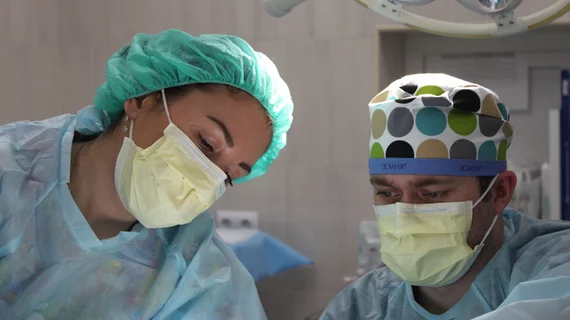High-risk percutaneous coronary intervention (HR-PCI) outcomes are similar when one or two operators perform the procedure, according to a new study published in the Journal of the American Heart Association.
“PCI is becoming more and more complex to treat a sicker population, but there is less case volume to support the development of operators’ technical skills and experience,” wrote first author Christopher P. Kovach, MD, a cardiologist at the University of Colorado in Aurora, and colleagues. “As a response to this dilemma, experts have advocated for a collaborative two‐operator approach, as pioneered in structural heart intervention, to provide technical support and augment real‐time intraprocedural decision‐making for these high‐risk cases. This team‐based approach offers many potential advantages, including discussions of alternative approaches and techniques to achieve procedural success, assistance in operating complex devices and management of unexpected complications.”
Kovach et al. explored data from the Veterans Affairs Healthcare System from 2015 to 2018, focusing on more than 6,500 patients who underwent HR-PCI during that time. While 93% of those patients were treated by a single operator, the remaining patients were treated my multiple operators. There was a “nonsignificant trend” toward the use of multiple operators over time, the authors reported.
Overall, in a propensity-matched cohort, the two treatment options resulted in similar rates of major adverse cardiovascular events.
A higher percentage of patients treated by multiple operators did undergo left main or chronic total occlusion intervention at centers with higher HR-PCI volumes, the group added, “suggesting selection bias.”
“These results do not support the routine use of multiple operators for HR‐PCI as defined in the present study,” the authors wrote. “However, this analysis does not address whether the addition of a second operator improves procedural outcomes for patients undergoing procedures in the highest stratum of complexity such as coronary atherectomy, left main intervention, and chronic total occlusion‐PCI with mechanical circulatory support. Multioperator HR‐PCI may also offer benefits for the operators, such as reduced cognitive burden and intraprocedural stress, which are not readily quantifiable.”
The full analysis is available here.

